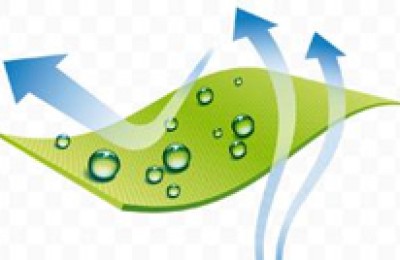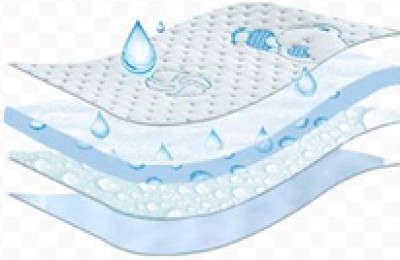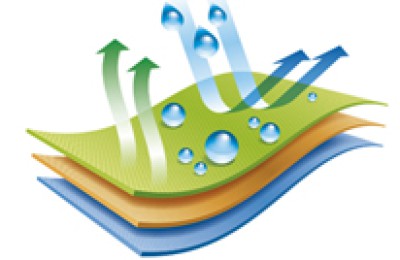Recently, the development situation of Egypt’s textile industry does not seem to be optimistic. “The Egyptian Gazette” published an article stating that the deterioration of Egypt’s national industrial development conditions prompted Egyptian textile workers to hold demonstrations. They believed that the government had not fulfilled its promise to provide raw materials to manufacturers and was failing to protect the development of the textile industry and save the industry on the verge of collapse. It did not play an effective role. Although only a few hundred people have participated in the demonstration, the Egyptian Textile Workers Trade Association has still been intimidated by workers, and it is expected that there will still be large-scale strikes by Egyptian textile workers in the future. The development of Egypt’s textile industry has always played an important role in Africa. However, the current deterioration of Egypt’s textile industry has caused industry insiders to worry about whether Egypt’s textile industry development advantage is declining. So what is the development situation of Egypt’s textile industry?
The current development is facing difficulties
At present, the number of Egyptian textile factory closures is rising rapidly, and the situation is getting worse, as more cotton farmers turn to planting other crops. The Egyptian government imposes tariffs on the import of raw materials, and many textile factories import raw materials from India and Pakistan. It is understood that in the past two years, approximately 30,000 textile workers have lost their jobs in Egypt. In addition, the downturn in global economic development has also put Egypt’s textile industry development in difficulties. Due to the rising cost of imported raw materials and declining demand for clothing in the domestic market, some Egyptian textile manufacturers are being forced to close their manufacturing companies or reduce the scale of their industries. A report released by the Egyptian Investors Union shows that due to the country’s continued impact Affected by the economic crisis, about 1,500 companies in Egypt have either closed factories or reduced their production scale. Mohamed Demosti, vice president of the Egyptian Ministry of Textile Industry and Investors Federation, also said that due to the economic crisis and the continued decline in the value of the Egyptian currency, about 40% of Egyptian cotton yarn and textile factories have closed. He believes that Egypt lacks appropriate Encourage policies to support textile manufacturers in participating in global market competition. Mohamed Karroubi, president of the Mahala Investment Organization, said that about 40 large factories, including in the Abual-Sabaa and Fajaral-Mahala regions, have currently stopped their industrial operations and will have a negative impact on Egypt’s textile yarn production Influence. Fantash Sai, president of Buhaira’s investment organization, also said that nearly 100 small and medium-sized manufacturing industries, including the textile industry, have closed down because they were unable to obtain sufficient resources.
Industrial advantages are still obvious
Despite the current development difficulties, Egypt’s unique geographical location, abundant natural resources and relatively complete textile industry chain still provide a solid foundation for the development of the Egyptian textile industry.
Egypt’s strategic location provides unparalleled transportation convenience to other African countries for the export of textile and clothing raw materials and products. Cotton is the most important economic crop in Egypt. It is mainly medium-long staple cotton (35mm) and below, and super-long-staple cotton (36mm) and above. Because of its long staple length, smoothness and good toughness, it is called a “national treasure” and is an important part of the textile industry. The finest raw materials have long been famous in the world. In the fiscal year 2010~2011, Egypt’s long-staple cotton planting area was 369,000 feddans (1 feddan = 6.3 acres), with an annual output of approximately 400,000 tons, accounting for 40% of the world’s total output. Egypt exports cotton to more than 80 countries. Egypt’s fourth largest cotton exporter is China, accounting for 12%.
Egypt joined the World Trade Organization in 1995 and actively participates in various bilateral and multilateral trade agreements. The regional trade agreements currently joined by Egypt include: Egypt-EU Partnership Agreement, Greater Arab Free Trade Area Agreement, and Qualified Industrial Zones Agreement, Common Market for Eastern and Southern Africa, Egypt-Turkey Free Trade Agreement, etc. Since Egypt and the EU established a partnership agreement in 2004, bilateral trade between the EU and Egypt has more than doubled, reaching its highest level in 2011, growing from 1.5 billion euros in 2004 to 2.3 billion euros in 2011. In 2011, Egypt launched negotiations on a trilateral customs union with Russia, Belarus and Kazakhstan and free trade agreements with India. These free trade agreements provide policy support for the export of Egyptian textile products.
In addition to policy encouragement, Egypt’s supporting industries are also well developed. An official from the Egyptian Textile Export Management Association (TEC) said: “In Egypt, we have more than 32 spinning mills, providing acrylic yarn for the production of different types of clothing such as sweaters, blankets, socks, sportswear, handicrafts, curtains and other applications. Thread. In addition to local consumption, acrylic products are also exported to countries in the Middle East, Europe, Africa and the Americas. In the past three years, Egyptian acrylic fiber products and acrylic yarn exports from Egypt have shown rapid growth. Egypt has an acrylic production base, which is It is the only base for the production of high-end fiber in the Middle East and the Middle East and North Africa, and its products are exported to more than 25 countries. For example, the production capacity of acrylic fiber at the Alfaayhaa Group factory in Egypt is 38,000 tons/year.”
China-Egypt textile trade is expected
In recent years, textile industry trade between China and Egypt has been frequent. According to Chinese customs statistics, China’s textile and clothing exports to Egypt in 2012 totaled US$2.57 billion, a year-on-year increase of 32.9%, of which clothing exports accounted for 58% and textile exports accounted for 42%. China imports from EgyptThe yarn, fabric and clothing were relatively small, totaling US$22 million, a year-on-year increase of 20%. The main product was carpet, accounting for 51%, with a total of US$11.6 million; imported cotton was US$49.6 million, a year-on-year decrease of 43%.
Shandong Huafang Co., Ltd., designated as the “printing and dyeing product development base” by the National Textile Product Development Center, has an annual production capacity of 200 million meters. It is a large-scale textile enterprise and its products are exported to various African countries. Ms. Guo, the person in charge of the company, said: “At present, the development of the African market is not stable, but the Egyptian trade market is relatively stable. Huafang exports about 36 million meters of fabrics to Africa every year, mainly batik products. Among them, clothing fabrics account for 17%, about 6 million meters, and exports to Egypt account for about 3% of the total clothing fabrics.” Ms. Guo said that Huafang’s textile exports to Egypt account for a small proportion of the company’s total export volume. Now It is in the market exploration stage, and Egypt will be one of the markets that Huafang will focus on and develop in the future.






